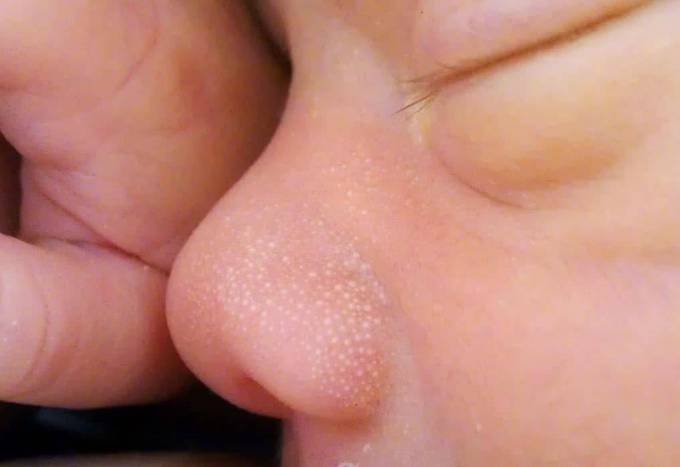Ultimate Guide to Milia Treatments in Dubai
Published By Dynamic Clinic, 4 Nov 2024

Milia are small, white cysts that typically appear on the face, particularly around the eyes and cheeks, but can occur anywhere on the skin. Often mistaken for whiteheads, milia are actually keratin-filled cysts that form when dead skin cells become trapped in tiny pockets on the surface of the skin. They are common in newborns but can affect people of all ages. For those living in Dubai, understanding the various milia treatments available can help in effectively managing and treating these pesky skin issues.
In this guide, we will explore the different Milia Treatments in Dubai providing insights into both professional and home treatment options. By understanding the causes, types, and effective treatment strategies, individuals can make informed decisions on how to address milia and achieve clearer skin.
Understanding Milia: Causes and Types
Before diving into treatment options, it's essential to understand what causes milia and the different types that exist. Milia can occur due to various factors, including sun damage, skin trauma, or the use of heavy skincare products. They can also develop in people with certain skin conditions, such as blistering disorders.
Types of Milia
-
Primary Milia: These are the most common type and are typically found on the skin's surface. They are often formed due to the natural exfoliation process being disrupted.
-
Secondary Milia: This type develops after skin injury, such as burns, rashes, or prolonged use of topical steroids. They may also arise from certain skin care products that clog pores.
Recognizing the type of milia is crucial for choosing the appropriate treatment.
Professional Milia Treatments in Dubai
Dubai offers a range of professional treatments for milia that are performed by qualified dermatologists and skincare professionals. These treatments are designed to remove milia safely and effectively.
1. Extraction
One of the most common treatments for milia is extraction. A trained dermatologist uses a small, sterile instrument to puncture the skin and extract the cyst. This method is quick and effective, with minimal downtime required afterward. It's crucial to have this procedure done by a professional to avoid skin damage and scarring.
2. Chemical Peels
Chemical peels involve applying a solution to the skin that exfoliates the outer layer. This treatment can help in reducing milia by promoting the shedding of dead skin cells. There are different types of chemical peels, including superficial peels, which are generally safe for all skin types. A dermatologist can recommend the most suitable peel based on the individual's skin condition.
3. Laser Therapy
Laser therapy is another effective option for treating milia. This procedure uses focused light to target the cysts, causing them to break down and fade away. Laser treatments are precise and can be beneficial for those with sensitive skin or larger areas of milia.
4. Microdermabrasion
Microdermabrasion is a non-invasive treatment that exfoliates the skin using tiny crystals. This process helps remove dead skin cells and unclogs pores, making it an effective option for preventing and treating milia. It typically requires multiple sessions for the best results.
Home Remedies for Milia
For those who prefer to explore at-home options, several remedies may help manage milia. While these treatments may not be as effective as professional procedures, they can complement the overall skincare routine.
1. Exfoliation
Regular exfoliation is key to preventing milia. Using gentle exfoliating scrubs or products containing alpha hydroxy acids (AHAs) can help keep the skin's surface clear of dead skin cells. It’s important to choose non-comedogenic products to avoid clogging pores.
2. Retinoids
Topical retinoids are vitamin A derivatives that promote skin cell turnover and can be effective in preventing milia. Over-the-counter retinol products can be incorporated into a nightly skincare routine. However, individuals should start slowly to avoid irritation.
3. Clay Masks
Clay masks can absorb excess oil and draw out impurities from the skin. Using a clay mask once a week may help keep pores clear and prevent the formation of milia.
4. Hydration
Keeping the skin well-hydrated is essential for overall skin health. Using a lightweight, non-comedogenic moisturizer can help maintain moisture balance without clogging pores.
Lifestyle Tips for Preventing Milia
Preventing milia is often easier than treating them once they appear. Here are some lifestyle tips that can help:
1. Choose the Right Skincare Products
Selecting non-comedogenic and lightweight skincare products can help prevent the formation of milia. Heavy creams and oily products can clog pores, leading to milia development.
2. Protect Your Skin from the Sun
Sun exposure can damage the skin and contribute to milia formation. Using sunscreen with a high SPF daily, along with protective clothing and hats, can help shield the skin from harmful UV rays.
3. Avoid Picking or Squeezing Milia
As tempting as it may be to pick at milia, doing so can lead to irritation, inflammation, and potential scarring. It’s best to leave extractions to trained professionals.
4. Regularly Clean Makeup Brushes
Makeup brushes can harbor bacteria and dirt, leading to clogged pores. Regular cleaning of brushes can minimize the risk of developing milia.
Seeking Professional Help
If at-home treatments do not yield results or if milia persist, seeking professional help is crucial. Dermatologists in Dubai are well-equipped to diagnose and treat various skin concerns, including milia. They can provide tailored treatment plans that consider individual skin types and conditions.
Final Thoughts
Milia are a common skin concern that can be effectively managed with the right treatments. In Dubai, individuals have access to a variety of professional treatments, including extraction, chemical peels, laser therapy, and microdermabrasion. Additionally, home remedies such as exfoliation, retinoids, clay masks, and proper hydration can support overall skin health and prevent the formation of new milia.
By combining professional treatments with effective home care and lifestyle practices, individuals can achieve clearer skin and manage milia more effectively. If milia become a persistent issue, consulting with a dermatologist can provide further insights and personalized treatment options tailored to individual skin needs.
